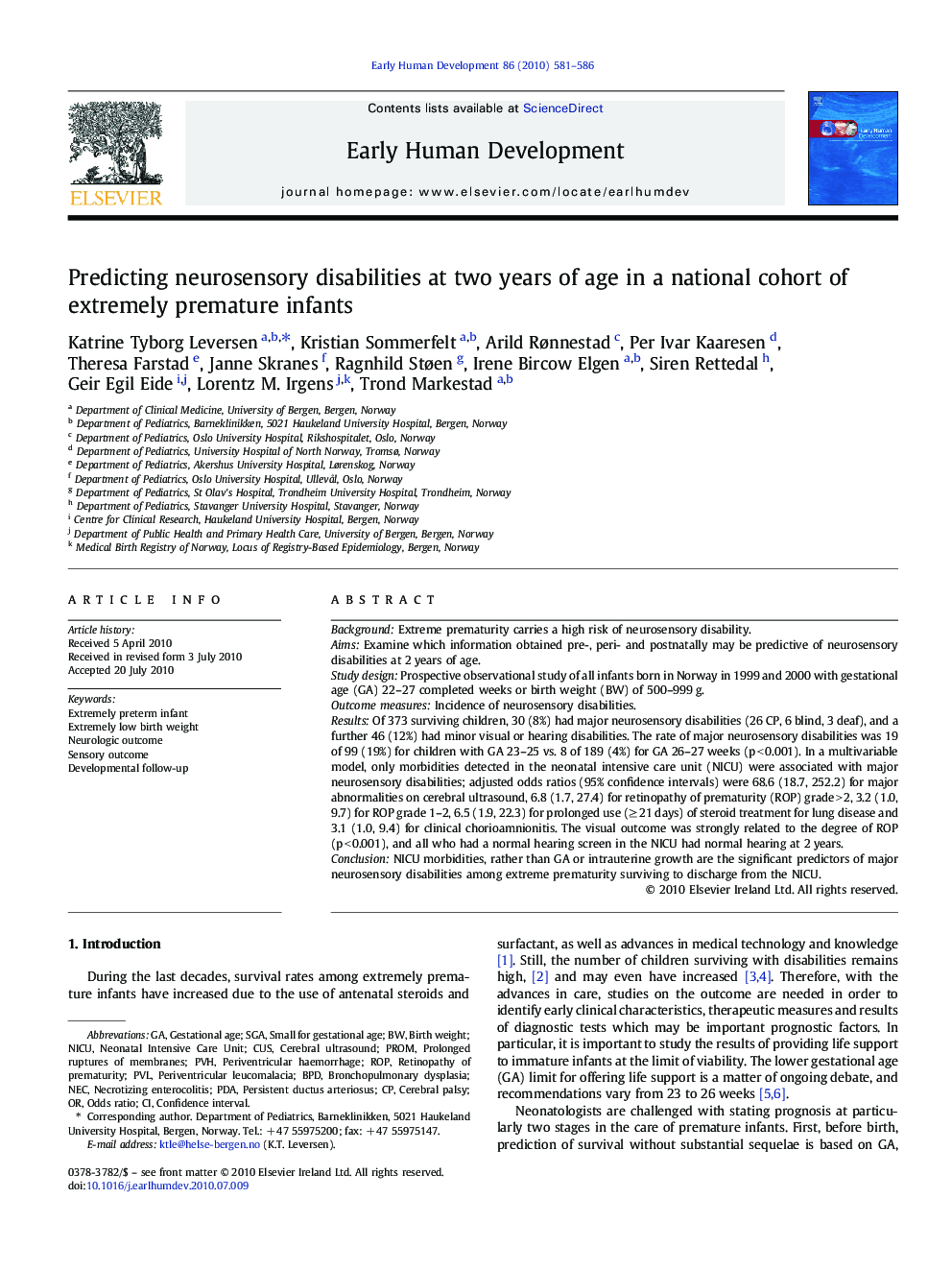| Article ID | Journal | Published Year | Pages | File Type |
|---|---|---|---|---|
| 6172228 | Early Human Development | 2010 | 6 Pages |
BackgroundExtreme prematurity carries a high risk of neurosensory disability.AimsExamine which information obtained pre-, peri- and postnatally may be predictive of neurosensory disabilities at 2 years of age.Study designProspective observational study of all infants born in Norway in 1999 and 2000 with gestational age (GA) 22-27 completed weeks or birth weight (BW) of 500-999 g.Outcome measuresIncidence of neurosensory disabilities.ResultsOf 373 surviving children, 30 (8%) had major neurosensory disabilities (26 CP, 6 blind, 3 deaf), and a further 46 (12%) had minor visual or hearing disabilities. The rate of major neurosensory disabilities was 19 of 99 (19%) for children with GA 23-25 vs. 8 of 189 (4%) for GA 26-27 weeks (p < 0.001). In a multivariable model, only morbidities detected in the neonatal intensive care unit (NICU) were associated with major neurosensory disabilities; adjusted odds ratios (95% confidence intervals) were 68.6 (18.7, 252.2) for major abnormalities on cerebral ultrasound, 6.8 (1.7, 27.4) for retinopathy of prematurity (ROP) grade > 2, 3.2 (1.0, 9.7) for ROP grade 1-2, 6.5 (1.9, 22.3) for prolonged use (â¥Â 21 days) of steroid treatment for lung disease and 3.1 (1.0, 9.4) for clinical chorioamnionitis. The visual outcome was strongly related to the degree of ROP (p < 0.001), and all who had a normal hearing screen in the NICU had normal hearing at 2 years.ConclusionNICU morbidities, rather than GA or intrauterine growth are the significant predictors of major neurosensory disabilities among extreme prematurity surviving to discharge from the NICU.
